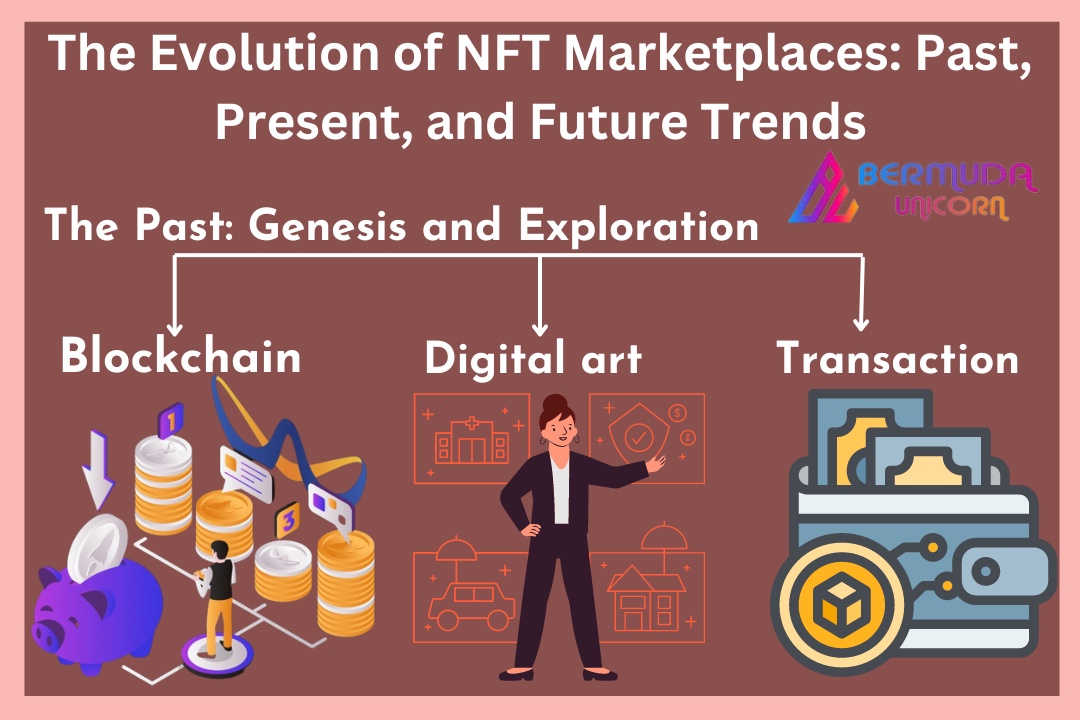In recent years, the world of art and collectibles has undergone a remarkable and irreversible transformation, driven by the rise of Non-Fungible Tokens (NFTs). These unique digital assets, powered by blockchain technology, have revolutionized ownership, authenticity, and value in the digital realm. At the heart of this transformative landscape are NFT marketplaces, which have played a pivotal role in shaping the past, defining the present, and setting the stage for future trends that promise to further reshape our digital experiences. Saphira NFTs
The Past: Genesis and Exploration
The concept of NFTs, often referred to as the "genesis" of digital ownership, dates back to the early 2010s. However, it wasn't until the release of CryptoKitties on the Ethereum blockchain in 2017 that mainstream interest was ignited. This seemingly whimsical virtual game allowed users to collect, breed, and trade digital cats, showcasing the potential of NFTs in the realm of digital art and collectibles.
The subsequent years witnessed a rapid proliferation of NFT marketplaces, each catering to different niches within the digital art and collectibles spectrum. Platforms like OpenSea, Rarible, and SuperRare became the pioneers of the NFT marketplace landscape. These platforms provided artists with a new and decentralized way to monetize their digital creations, while collectors gained access to unique and verifiable digital assets. However, this early stage of the NFT journey was not without its challenges, particularly in the realm of scalability and transaction fees.
The Present: Diversification and Innovation
As NFTs gained traction and mainstream recognition, the present NFT marketplace landscape evolved to address the limitations of the past. One of the most significant developments has been the diversification of NFT offerings beyond traditional art and collectibles. NFTs now encompass a wide array of digital assets, including music, virtual real estate, metaverse assets, and even tweets. This diversification has attracted a broader and more diverse audience, fostering innovation and pushing the boundaries of what can be tokenized.
Moreover, the integration of Layer 2 scaling solutions has significantly alleviated the scalability concerns that were prevalent during the early days of NFT adoption. Platforms like Polygon (formerly Matic) have emerged as a popular choice, enabling faster transactions and drastically reduced fees compared to the Ethereum network. This technological advancement has made NFTs more accessible to creators and collectors alike, democratizing the space even further.
Collaborations between artists, musicians, brands, and blockchain developers have added a new layer of utility to NFTs. Beyond their inherent value as digital collectibles, NFTs can now serve as access keys to exclusive content, experiences, and virtual worlds. This fusion of art and utility has expanded the potential of NFTs, enabling them to transcend traditional boundaries and creating new and engaging ways for creators to interact with their audience.
The Future: Trends and Beyond
Looking ahead, the evolution of NFT marketplaces promises a host of exciting trends that are set to redefine digital ownership and creative expression. One notable trend is the increasing interoperability between different blockchain networks. This cross-chain compatibility will allow NFTs to move seamlessly between platforms, effectively expanding their reach and liquidity. As a result, the value proposition of NFTs will likely be enhanced, fostering a more vibrant and interconnected ecosystem.
Another significant trend on the horizon is the growing focus on environmental sustainability. While the initial excitement surrounding NFTs was accompanied by concerns about their energy-intensive nature, there is a growing movement toward eco-friendly NFT platforms. These platforms utilize proof-of-stake consensus mechanisms, which significantly reduce energy consumption compared to the traditional proof-of-work blockchains. This shift towards sustainability reflects the growing awareness of the environmental impact of blockchain technology and is expected to shape the NFT marketplace landscape in the future.
The integration of NFTs with the metaverse is yet another trend that holds immense potential. As virtual worlds and metaverse environments continue to gain prominence, NFTs could serve as the digital passports to these immersive experiences. This convergence of NFTs and the metaverse could revolutionize how we perceive ownership, interaction, and digital identity, creating a seamless bridge between the physical and virtual realms.
Furthermore, the concept of fractionalized ownership is gaining traction within the NFT space. This innovation allows high-value NFTs to be divided into smaller, tradable fractions, enabling a larger audience to invest in and own a stake in these assets. This democratization of ownership aligns perfectly with the decentralized ethos of blockchain technology, making NFTs more inclusive and financially accessible.
Conclusion
In the grand narrative of technological evolution, the emergence of NFT marketplaces represents a pivotal chapter. From their humble beginnings with CryptoKitties to the present-day diverse and vibrant landscape, NFT marketplaces have transformed the way we perceive and engage with digital assets. The past, present, and future trends of NFT marketplaces showcase the immense potential of blockchain technology to reshape our digital experiences, redefine ownership, and transform the way we value and own digital assets. As the NFT journey continues to unfold, one thing is certain: the evolution of NFT marketplaces will continue to shape the creative and technological landscape, leaving an indelible mark on the digital world.


No comments yet